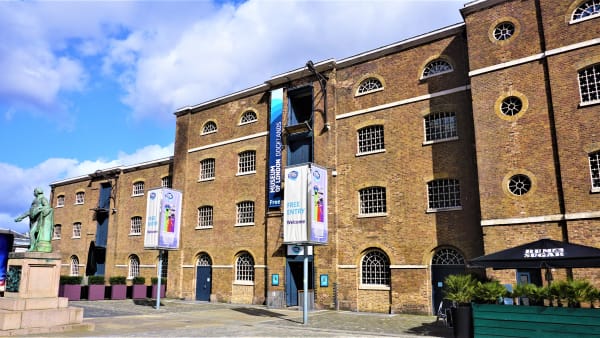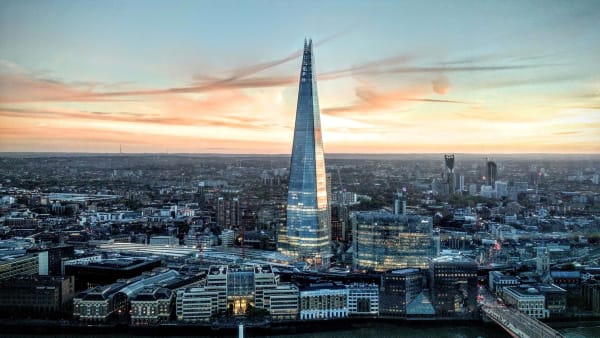London Underground
With 14 lines between Tube, Overground and DLR services, 272 stations, and 402 kilometres (250 miles) in length, London has one of the most extensive metro networks in the world.
London Underground
With 14 lines between Tube, Overground and DLR services, 272 stations, and 402 kilometres (250 miles) in length, London has one of the most extensive metro networks in the world.
The London Underground is the rapid transit system that serves the Greater London area. This system, which is the oldest of its kind, includes the regular underground trains (commonly known as Tube, with 12 lines), as well as the DLR (Docklands Light Railway) and the London Overground trains.
For the average visitor, the London Underground is the main choice of transport to move around the city. Considering the extension, speed, availability, and reliability of the service, the Underground will often be the quickest and most cost-effective way to reach your destination, especially if compared to taxis or buses.
Even though the network and system can seem intimidating at first, they are not actually difficult to operate. For the most part, it’s just a matter of understanding how the tickets and travel zones work. In terms of station distribution, no matter where you are in London, there will always be an Underground stop close by.
To go on the Underground, you can use a Travelcard, Oyster (or contactless payment method), or single-journey ticket. The fares are calculated on the basis of travel zones, so you’ll need a different ticket or pass depending on how many zones you want to travel in.
Once you’re at an Underground station, you have to tap in with your card or ticket to access the platforms. As long as you don’t exit a station or tap out, you can change lines in the Underground however many times you want.
The various lines are organised by name and colour, so it’s generally quite easy to read the London Underground map, follow the course of each line, and find your stop. Once you’ve reached your destination, you just have to leave the platforms and tap your card or ticket at the gates on your way out.
In the following sections, you’ll find all the information you need to understand how travel zones for the London Tube and Rail services work, the operational hours and schedules, as well as tickets, travel cards, and pricing.

Zones
As far as the London Rails and Underground system (which includes the Tube, the DLR, and Overground) goes, the city is divided into 9 concentric zones. The areas you are likely to visit as a tourist are zones 1 and 2. These are the most central zones in the inner city, where the majority of the attractions and monuments can be found.
Journey fares and travel card prices for the London Underground are calculated on the basis of zone coverage rather than stations travelled. This means that all journeys within the same zone cost the same, and the price goes up the more zones you travel through during your journey. If a station is between two zones (like Turnham Green or the Greenwich stations), you can choose to make it count for whichever zone is more convenient for you.
The most common tickets and passes to get for tourists cover zone 1 and 2. Here are some important sites outside zone 1 and 2.
- Heathrow Airport - Zone 6
- Gatwick Airport - Zone 6
- Wembley Stadium - Zone 4
- Wimbledon (All England Lawn Tennis and Croquet Club) - Zone 3
- Hampton Court - Zone 6
Tickets & passes
On the London Underground you can purchase single-journey printed tickets, Travelcards, or pay for your journeys with an Oyster or contactless payment method.
Single-journey printed tickets all cost the same up until zone 6, independently of zone validity or peak/off-peak hour use. This, however, makes single-journey tickets not convenient at all, costing between 150% and 15% more than other options, depending on the type of journey.
For example, a single-journey ticket in zones 1-2 costs £6.70 for an adult and £3.35 for a child. Below you can find all single-journey ticket prices for the London Underground.
| Zone |
|---|
| 1-6 (all combinations) |
| 1-7 |
| 1-8 |
| 1-9 |
| Zone | Adult | Child (11-15) |
|---|---|---|
| 1-6 (all combinations) | £6.70 | £3.35 |
| 1-7 | £7.80 | £3.90 |
| 1-8 | £9.00 | £4.50 |
| 1-9 | £9.30 | £4.60 |
Children under 11 can use the Tube, DLR , Overground and any Transport for London (TfL) train for free.
Oyster cards and contactless payment methods share the same pricing system and are much more convenient. Using an Oyster or contactless method, a single journey in zone 1 costs £2.80 (at peak hours) or £2.70 (off-peak hours). If you travel between zones 1 and 2, a single journey will cost you £3.40 (peak hours) or £2.80 (off-peak hours).You can see the fare for all zones and time slots in the following table.
| Zone |
|---|
| Zone 1 |
| Zone 2 |
| Zone 1-2 |
| Zone 1-3 |
| Zone 1-4 |
| Zone 1-5 |
| Zone 1-6 |
| Zone 1-7 |
| Zone 1-8 |
| Zone 1-9 |
| Zone 2-6 |
| Zone | Peak hours | Off-peak |
|---|---|---|
| Zone 1 | £2.80 | £2.70 |
| Zone 2 | £1.90 | £1.80 |
| Zone 1-2 | £3.40 | £2.80 |
| Zone 1-3 | £3.70 | £3.00 |
| Zone 1-4 | £4.40 | £3.20 |
| Zone 1-5 | £5.10 | £3.50 |
| Zone 1-6 | £5.60 | £3.60 |
| Zone 1-7 | £6.00 | £4.40 |
| Zone 1-8 | £7.40 | £4.40 |
| Zone 1-9 | £7.50 | £4.50 |
| Zone 2-6 | £3.30 | £1.90 |
The only differences between using an Oyster card and a contactless payment method are regarding the activation fee and the maximum price cap. For all information about this and how exactly the cards work, you can have a look at our in-depth article.
Lastly, a Travelcard gives you unlimited journeys for a limited period of time (1 day, 7 days, 1 month, or even for an entire year) for a flat fee. The price is determined on the basis of the zones you want to cover.
A 1-day Travelcard is not very convenient, since you would have to buy a zone 1-4 daily Travelcard (there is no daily Travelcard for zones 1-2 only), which would cost £15.20. However, the weekly Travelcard is extremely convenient and useful for tourists. A zone 1-2 weekly Travelcard costs £40.70.
| Zone |
|---|
| 1-2 |
| 1-3 |
| 1-4 |
| 1-5 |
| 1-6 |
| 1-7 |
| 1-8 |
| 1-9 |
| Zone | 1 day | 7-day | 1 month | 1 year |
|---|---|---|---|---|
| 1-2 | n/a | £40.70 | £156.30 | £1,628.00 |
| 1-3 | n/a | £47.90 | £184.00 | £1,916.00 |
| 1-4 | £15.20 | £58.50 | £224.70 | £2,340 |
| 1-5 | n/a | £69.60 | £267.30 | £2,784.00 |
| 1-6 | £21.50 | £74.40 | £285.70 | £2,976.00 |
| 1-7 | n/a | £76.50 | £293.80 | £3,060.00 |
| 1-8 | n/a | £90.30 | £346.80 | £3,612.00 |
| 1-9 | £25.70 | £100.20 | £384.80 | £4,008.00 |
For the purposes of ticket validity, each day is considered to start at 4:30 am and ending at 4:29 am the following day. This means that if you purchase a 7-day Travelcard on Friday morning at 9:00 am, the card will be valid until the following Friday at 4:29 am (the night that goes from Thursday to Friday).
If you want to know more about Travelcards for the London Underground, you can read our dedicated article.
Schedule & Timetables
The London Underground generally runs between 5:00 am and midnight, with reduced hours on Sundays (6:30 am till midnight). On average, train frequency is around 10 minutes, but this time is considerably shortened at peak hours (during the work week from 6:30 am to 9:30 am, and from 4:00 pm to 7:00 pm) and in the city centre. At these times, in the most central stations, you can expect a train every 3-4 minutes. You can check official timetables for all London Tube lines on the Transport for London website .
Additionally, on Fridays and Saturdays, the service on a few select lines is extended for the entire night. This service is known as the Night Tube, and it is active on the following lines: Central, Jubilee, Northern, Piccadilly, and Victoria. On the Night Tube, you can expect train frequency to be between 15 and 20 minutes, depending on the line. You can check specific and updated timetables on the Transport for London official website .
Another factor to keep in mind about the London Underground is that it operates on a peak and off-peak hours basis. These time slots are used to charge different fares. Prices are higher at the busiest times of the day and cheaper at quieter times. The fares are charged based on the time you touch in at an Underground station.
Peak hours are Monday to Friday (excluding public holidays) between 6:30 am and 9:30 am, and between 4:00 pm and 7:00 pm. Off-peak hours are all other times. If you travel from a station outside Zone 1 to a station within Zone 1, 4:00 pm to 7:00 pm, Monday to Friday, then you’ll also be charged as off-peak.
What’s the difference between the London Underground, the Docklands Light Railway, and the London Overground?
The Tube, the DLR (Docklands Light Railway), and the London Overground, can all be treated as part of the same London Underground transport network. Together with the tram, they are all managed by the TfL, Transport for London , and share the same ticketing, zone, and fare system.
While the Tube is made up of several lines, most of which (but not entirely!) are actually under street level, the DLR and the London Overground operate as single lines above the ground. The London Overground is a railway service that serves part of the suburbs, while the DLR is an automated light metro system serving the Docklands area.
On the map, together with the Tube lines, the DLR, London Overground, and Tram, you might also see the IFS Cloud Cable Car and railway lines operated by National Rail. These networks share the same zone system but not the same fare system, although you might be able to use your Oyster card on some of them. For more information regarding these, you can head to the TfL website .
In any case, as a tourist, you will probably only use the Tube lines to move around the city centre and visit all the sights, so you don’t need to worry much about other TfL transport networks.
Apps for the London Underground
The TfL Go is the official travel app designed by Transport for London to help users plan their journeys around the London Underground.
With this app, you can plan your route and get live information about the Tube, the London Overground, the DLR, the trams and even bus lines. Additionally, you’ll also be able to check walking and cycling routes, as well as plan accessible journeys (thanks to the info on platform access, lift status, and toilet location).














